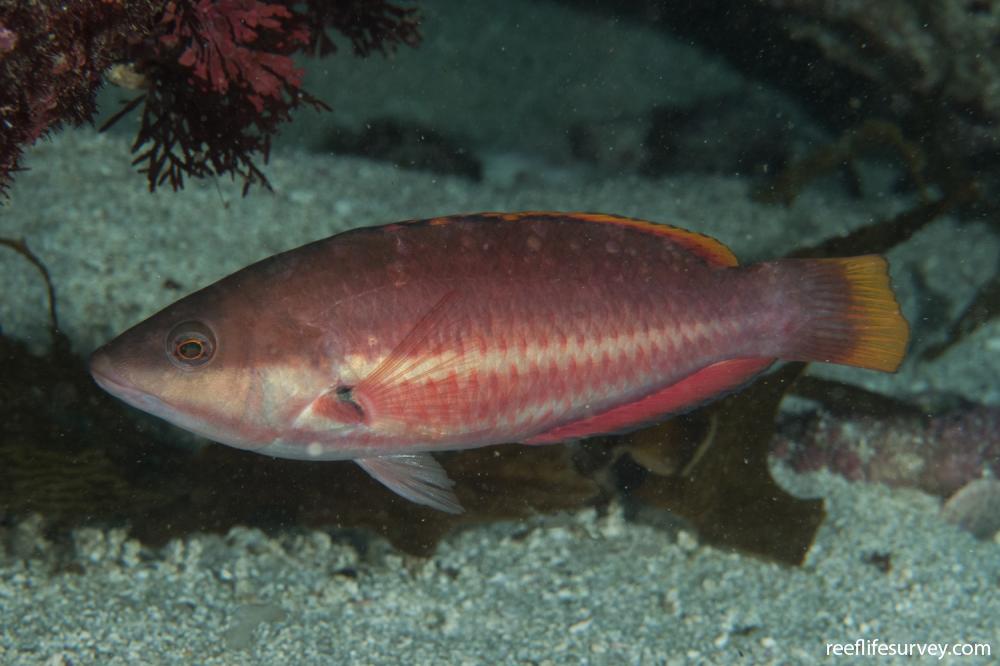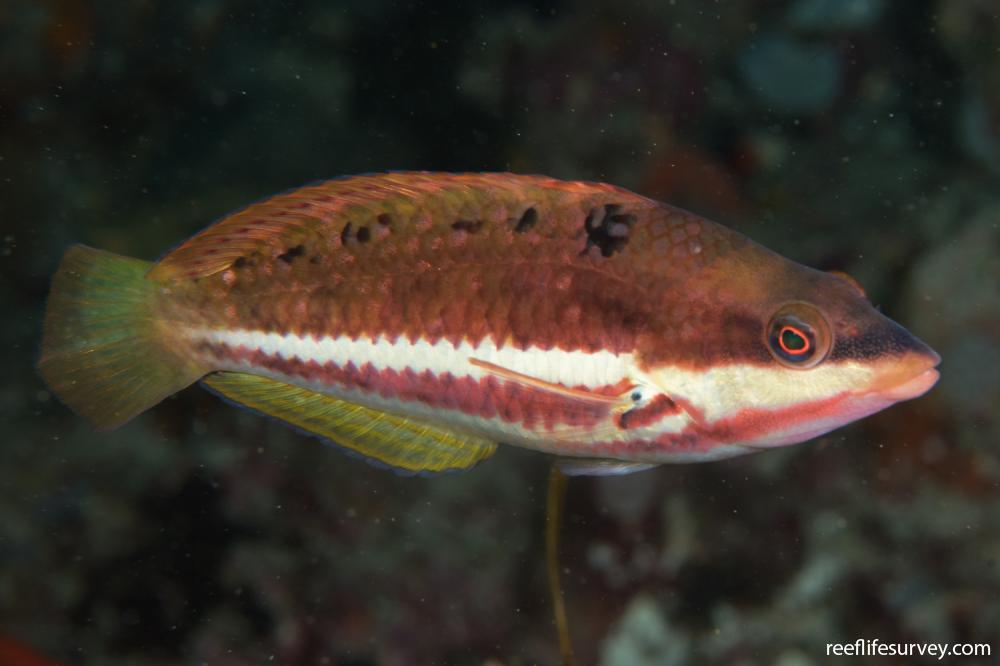Pseudolabrus biserialis
Red-banded wrasseSimilar Species
Same Genus
Distribution
Localised
Description
Male and female have red bodies with distinctive white stripes along the sides; the female has black spots along the back, and the male has brighter fins.
Information
Max Size: 17 cm
Sea Temperature Range: 16.5-23.2°C
Depth: 3-20m
Habitat Generalization Index: 15.76
Also referred to as the SGI (Species Generalisation Index), this describes the habitat niche breadth of the species. Species with values less than 15 are found in a relatively narrow range of reef habitat types (specialists), while those over 25 may be found on most hard substrates within their range (generalists). Learn more here.
Conservation and Rarity
IUCN Status: Least Concern
Occurrence: Widespread (70.9% of sites)
Occurrence describes how often the species is found on surveys within its distribution. It is calculated as the % of reef sites surveyed by RLS divers across all the ecoregions in which the species has been observed
Abundance: Few (5 per transect)
Abundance is calculated as the average number of individuals recorded per RLS transect, where present.
Edit by: GJ Edgar. 2008. Australian Marine Life. New Holland, Sydney


















